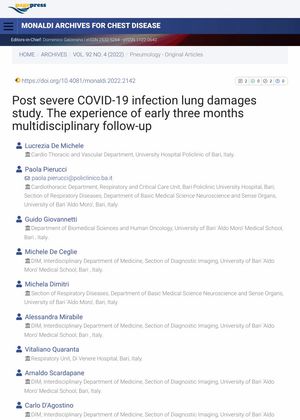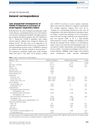Post Severe COVID-19 Infection Lung Damage Study: The Experience of Early Three Months Multidisciplinary Follow-Up
January 2022
in “
Monaldi archives for chest disease
”

TLDR After severe COVID-19, lung damage can improve, detected effectively by lung-ultrasound, and high pressure support during hospitalization can increase lung artery size. Also, about 22% of patients had lung blood clots, and when treated, they recovered faster.
The study followed 38 COVID-19 ARDS survivors who required non-invasive respiratory support (NRS) and found that lung-ultrasound (LUS) was highly effective (ROC AUC: 0.95, Cohen’s K: 0.74) in detecting lung consolidation improvement compared to chest CT-scans. It was also found that a pressure of 11 cm H2O ExpiratoryPAP-continuous-PAP-max (EPAP-CPAP) applied during hospitalization was significantly correlated (p-value=0.026) with an increased pulmonary artery common trunk diameter. Furthermore, 21.8% of patients were diagnosed with pulmonary emboli (PE) and started on anticoagulant treatment. These patients had a significantly shorter hospital stay, time to negative swab, CPAP/NIV duration, P/F ratio, and D-dimers at follow-up compared to non-PE patients. The study emphasizes the need for a comprehensive approach to ARDS COVID-19 patients requiring NRS, the importance of high-EPAP-CPAP-max greater than 11 mmHg during admission, the utility of LUS in monitoring recovery, and the correct identification and treatment of patients with PE during follow-up.

